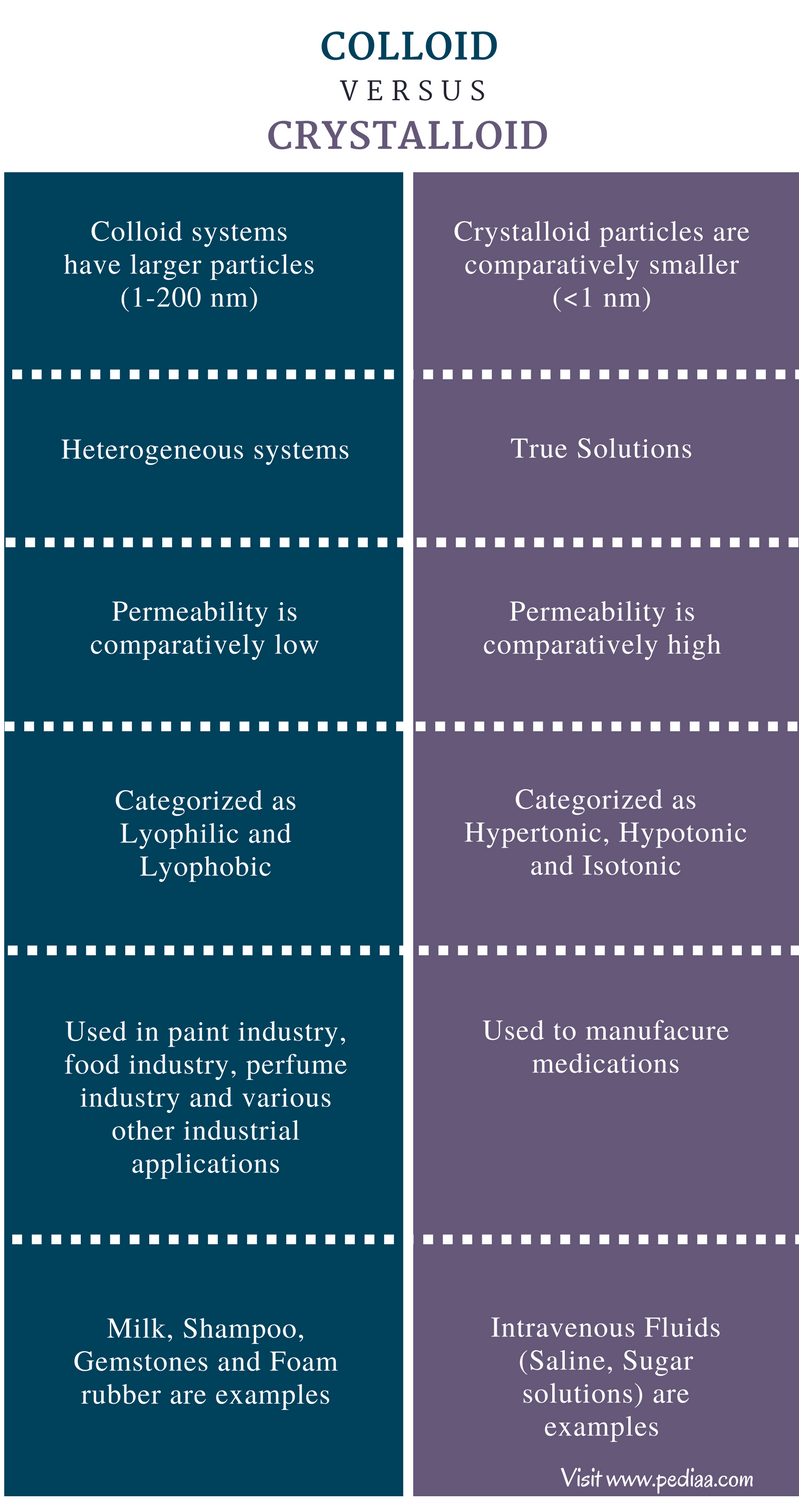
Colloid Fluids Types. Colloids are classified according to the state of the dispersed phase and the dispersion medium. Colloids are able to pull fluids into the bloodstream. Many colloids may contain albumin that is equally osmotic to plasma and 25 of the solutions. Macromolecular colloids in this type of colloids the macromolecules form a solution with a suitable solvent.

Macromolecular colloids in this type of colloids the macromolecules form a solution with a suitable solvent. These fluids are typically used to maintain circulating fluid volume after blood loss from trauma or surgery. Colloids are classified according to the state of the dispersed phase and the dispersion medium. Any colloid with water as the dispersing medium can be classified as hydrophobic or hydrophilic. Colloids are able to pull fluids into the bloodstream. The size of the particles of this macromolecular solution lies in the range of colloidal particles size.
Fluids in the colloid group are albumin dextran and hetastarch.
Colloid administration is prone to increased risk of side effects. A hydrophobic colloid is one in which only weak attractive forces exist between the water and the surface of the colloidal particles. Colloids are able to pull fluids into the bloodstream. Colloid administration is prone to increased risk of side effects. The size of the particles of this macromolecular solution lies in the range of colloidal particles size. Any colloid with water as the dispersing medium can be classified as hydrophobic or hydrophilic.